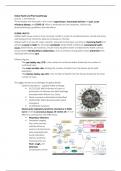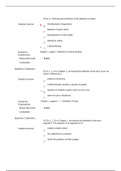Samenvatting
Samenvatting - Global Health, Pharmacotherapy and Communication (WBFA034-05)
- Instelling
- Rijksuniversiteit Groningen (RuG)
Samenvatting van de colleges Global Health and Pharmacotherapy met ondersteunende afbeeldingen en tabellen. De aantekeningen van de colleges zijn hierin verwerkt.
[Meer zien]












